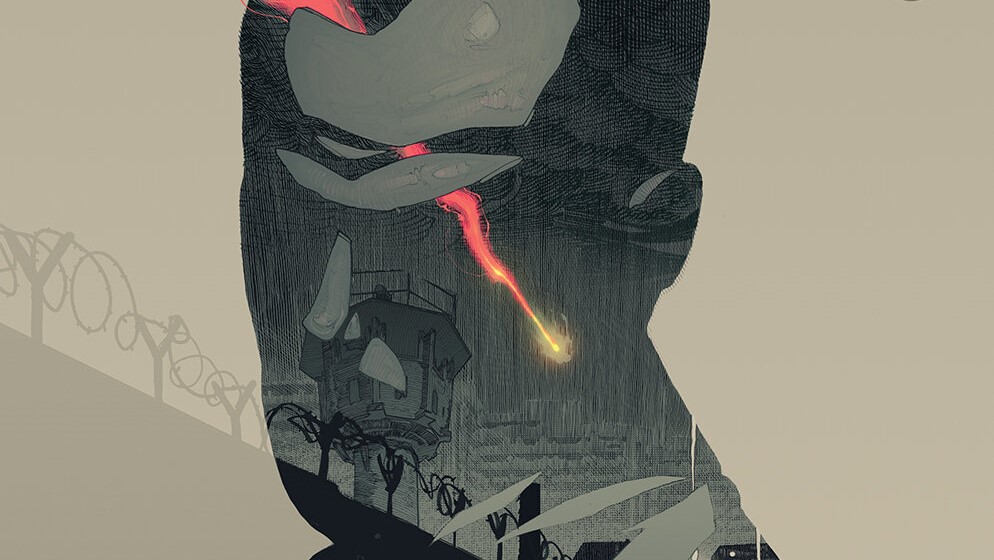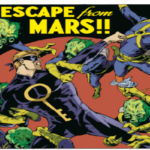 Writer: Jeff Loveness
Writer: Jeff Loveness
Artist: Lisandro Estherren
Colorist: Patricio Delpeche
Letterer: Steve Wands
Cover Artist: Evan Cagle
Publisher: Boom! Studios
Strange Skies Over East Berlin starts with a familiar story drawn from the darker chapters of human history: good citizens helping random and desperate strangers escape over the Berlin Wall in 1973. The attempt fails when a late-comer alerts the guards to their presence, but as our main protagonist Herring is escaping for his life, he and everyone else see a bright, multi-colored streak light up the East German sky.
Herring is a part of the German Stasi, working undercover to help his fellow East Germans. With this work comes the great risk of being discovered by his superior, Keiner. Herring is sent on assignment to discover what’s going on at a “crash” site, and there, he runs into Keiner, putting himself at greater risk of being discovered. But that risk pales in comparison to the dangers coming out of the crash site.
As our culture is currently awash in ’80s nostalgia, Jeff Loveness takes us away from boomboxes and leg warmers to remind us of a different part of the Cold War-era in which a totalitarian regime built a wall that literally separated a city, country, and — as he puts it in the intro — the world. That makes for an already-intriguing setting for what has the makings of a darkly haunting sci-fi tale.
The story feels very noir at the start with Herring donning a trench coat and coolly lighting a cigarette as he ponders to himself about the purpose of lying. The artwork does an amazing job playing up the dark shadows and dimly-lit streets to add to the effect, as does the typewriter-style lettering.
As the story goes on, the sci-fi elements start to lightly trickle in, which seems like a wise direction to ease us from the noir elements into adding an alien invasion. But for most of the book, we still feel like this is a slick, Cary Grant-esque spy thriller set in the Cold War.
This seems like a good time to talk about the artwork before continuing on with analyzing the story. The artwork has a classic European comics — almost Hergé-like — quality to it. The clear lines play well with the soft watercolors, and as I noted before, the difference between standard dialogue lettering and the typewriter style in the voiceover narrative make it easy to distinguish between the two. But most of the time I was thinking: is this really the artwork I would pick to tell an alien invasion story?
And I’m glad I was proven wrong. The scene where we get our first taste of what streaked over the skies that night is truly haunting, and the story, artwork, and eerie shades of blue all play to that strength. The scene was a standout not just for the creep-factor but also for showing just how well this creative team works together.
One aspect that felt a little off toward the close of the book was reintroducing Keiner into the mix. After Herring barely escapes at the beginning, Keiner is the most immediate threat since Herring is not entirely sure if he was spotted by the all-knowing, all-seeing Keiner. However, when the alien entity makes its debut, it seems like all other concerns are nowhere near the existential crisis ahead. Of course, Keiner doesn’t know there’s that threat, and Herring still doesn’t seem to understand it is a huge threat, but I feel it might be possible to do a little better job at having the reader see it from their perspective rather than seeing their melodrama play out knowing what we know.
Strange Skies Over East Berlin is a well-crafted, genre-blending story ripped right out of the history books and given a haunting sci-fi twist. It has all the makings of historical revisionism done right — I just hope I don’t have to scale over an oppressive wall to get to the next issue.




